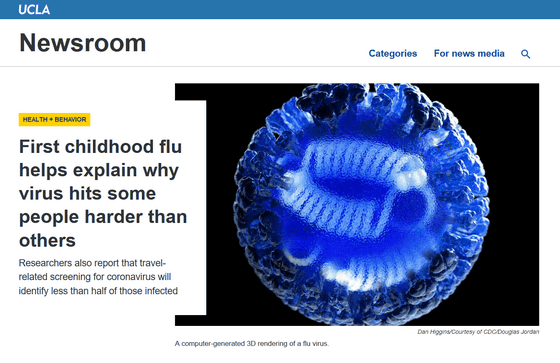Why are there people who are less likely to get the flu?

Some people often get the flu during the flu season, while others rarely get the flu. An American research team reports that the cause of the phenomenon that different people have different resistance to the influenza virus is the 'type of influenza that occurred during childhood.'
Childhood immune imprinting to influenza A shapes birth year-specific risk during seasonal H1N1 and H3N2 epidemics
First childhood flu helps explain why virus hits some people harder than others | UCLA
https://newsroom.ucla.edu/releases/why-flu-hits-some-people-harder-than-others

Potent protection against H5N1 and H7N9 influenza via childhood hemagglutinin imprinting | Science
Why being born before 1968 could save you from a bird flu pandemic
https://www.telegraph.co.uk/science/2016/11/10/why-being-born-before-1968-could-save-you-from-a-bird-flu-pandem/
The joint research team of the University of California, Los Angeles and the University of Arizona began their research by focusing on the fact that the proportion of people who become infected with H1N1 and H3N2 , the mainstream seasonal flu, varies with age. As a result of research, it turned out that people infected with H1N1 in childhood have resistance to H1N1 even after becoming an adult, and similarly, people infected with H3N2 have resistance to H3N2 even after becoming an adult . Since the influenza virus that prevails according to the age is different, `` the age group where H1N1 was prevalent in childhood '' and `` the age group where H3N2 was prevalent '' are divided, `` resistance to influenza virus during epidemic '' Was determined.
From this, the research team announced that there is a process called 'immune imprinting' in which the type of influenza infected first determines the resistance of the influenza that it has. This imprinting works against 'the first flu,' and says that when infected with 'the second flu,' it does not create as effective resistance as the first flu.

The research team also mentions the 'family of viruses' created by the 'evolutionary process' of the influenza virus. As of 2016, the research team has published a paper that if it acquires resistance to a certain influenza by immune imprinting, it is highly likely that this resistance will also function as `` influenza virus belonging to the same family ''. Was. However, a new paper published in December 2019 states that H1N1 and H2N2 belonging to the same family cannot share tolerance. Researchers have described this phenomenon as 'difficult to explain.' In a 2019 study, the research team revealed that H1N1 and H3N2 belong to different families among influenza species.
The team says that by identifying outbreaks of the influenza virus, the generation that is not resistant to the flu can be used to predict 'age groups that are most affected by the flu,' the results of the study. The research team claims that if the accuracy of this prediction increases, it becomes easier to 'optimize vaccine distribution' in situations such as limited vaccine quantities.
Related Posts:
in Science, Posted by darkhorse_log







